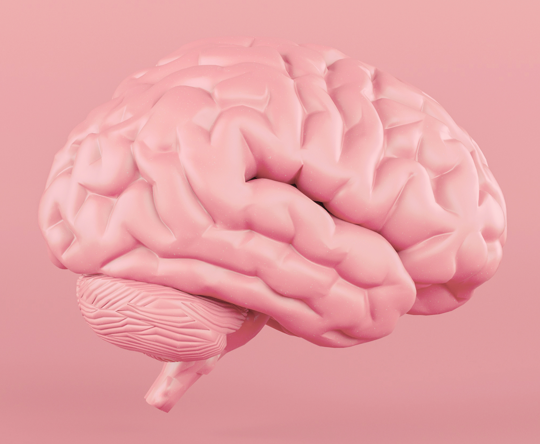Find out which six eye diseases most commonly affect women, how to recognize them and what to do for better eye health
The main reason why women are more affected by certain eye diseases is the fact that they usually live longer, so they are more at risk of diseases that are more common with age. Another reason is the hormonal differences between women and men, says Professor Iva Dekaris, MD, PhD, Head of the Department of Cornea, Special Hospital for Ophthalmology Svjetlost. Research has shown that women are not aware of the greater risk to their eye health, although a significant number of diseases can be prevented.
The World Health Organization estimates that out of the 2.2 billion people suffering from eye diseases worldwide, for at least a billion of them the disease could have been prevented. Apart from aging and genetic predispositions, eye health is influenced by many other factors we have control over ourselves, thus preventing disease and improving our health. This is why ophthalmologists, neurologists, endocrinologists, psychiatrists, rheumatologists, otorhinolaryngologists, plastic surgeons, general practitioners, pharmacists and engineers are brought together at X-Lab — the expert research hub by JGL — to analyse the latest research and, by applying a holistic approach, to share with us how to take care of our eye health and why that is important for our whole bodies.
1 Is it likely that women will have more problems with vision than men just because of their longer life expectancy or are there some other reasons?
According to expert analyses, women are more likely to have eye diseases that can lead to significant vision loss, such as macular degeneration (disorder in central vision), glaucoma (high eye pressure) and cataracts. One of the most common eye diseases related to old age, the so-called dry eye, which generally does not lead to a significant vision decline, but is characterized by very unpleasant symptoms such as a scratching feeling in the eye, a feeling of having sand in your eyes, redness and eye fatigue. The main reason why women are more affected by these eye diseases is the fact that they usually live longer, and these diseases are much more common with age. Apart from age, dry eye syndrome affects women more often than men and due to a different hormonal status, i.e., in menopause this syndrome occurs due to hormonal changes.
2 Which eye diseases most often affect women?
The most common eye diseases that women should watch out for are glaucoma, age- related macular degeneration, cataracts, diabetic retinopathy (for those suffering from diabetes), vitreous detachment, and dry eye; respectively according to probability of permanent visual impairment.
• Glaucoma Glaucoma is often the silent killer of sight due to the fact that this disease, if not specifically looked for by an eye doctor, can end very badly in the long run when it comes to vision.
• Macular degeneration Macular degeneration is a very common eye disease among the elderly, for which there is preventive therapy, so it is important to detect it as soon as possible and advise an ophthalmologist in order to prescribe appropriate treatment.
• Eye diseases caused by diabetes If a woman suffers from diabetes, she should be aware that this disease can lead to changes in the back of the eye, which an ophthalmologist needs to specifically look for, and if necessary, apply any necessary therapy before there is any severe damage to the ocular background .
• Cataracts Cataracts are important to mention because of their frequency as an eye disease, these most often manifest as blurred vision. It used to mostly appear after the age of 65, but today, as it turns out, it appears much earlier. It is important to detect cataracts early because the cataract should not have matured enough or be very hard when the operation is performed, because otherwise this procedure can become risky for the eye. Therefore, it is important to detect it in time, so that the operation is performed at the optimal time for the patient, in that case the procedure is very fast, painless and effective. In practice, there are cases when the patient herself does not even notice that the cataract is already advanced and that it has hardened in one eye because she has vision in both eyes, so without regular eye examinations she can get into a situation where this cataract is detected too late, making the surgery unnecessarily difficult for the afflicted eye.
• Vitreous detachment Vitreous detachment is a frequent change depending on age, which manifests as flashes in the eye and the appearance of a series of ‘floaters,’ or flashes moving in front of the eye, which can significantly reduce vision. It is important to have a timely check-up with an ophthalmologist to get treatment advice and to recognize the difference between this age- related change and an emergency diagnosis such as retinal detachment, which needs to be surgically treated immediately.
• Dry eye This is a common problem that impairs the quality of life, which can be better treated if the problem is detected in time, and thus improve a woman’s quality of life. Dry eye causes many unpleasant problems such as scratching in the eye, a feeling of having sand in your eyes, redness and eye fatigue.
3 At what age do age-related vision problems most often occur?
Vision problems related to aging begin to appear around the age of 40, when the first signs of short-sightedness occur. From that age onwards, presbyopia (age-dependent farsightedness) appears as a natural process, when a person can no longer clearly see and read a book, any text on a mobile screen or computer, or perform any other task requiring you to see up close without difficulty. Presbyopia occurs due to loss of elasticity of the lens in our eye, making the lens no longer able to change its shape, which is necessary for a person to be able to focus on objects located at various distances.
The first symptoms of presbyopia are blurred vision or headaches when working at close range, tearing and eye fatigue. Presbyopia occurs earlier in people who are far-sighted (having plus-dioptre lenses), and can occur much later in people with short-sightedness (people who wear minus-dioptre lenses). Thus, short-sighted people can read well up to their fifties, or simply by taking off their long-distance glasses they can achieve good vision up close. After the age of 40, elevated intraocular pressure (glaucoma) can occur, which usually doesn’t manifest in visible symptoms, and a sick person, if they don’t go to an eye doctor to measure intraocular pressure, may begin to lose peripheral vision without even realising it.
4 Can we prevent these problems ourselves?
The best way to prevent eye disease at any age, and thus in the case of eye aging, is to take care of your own eye health by seeing an ophthalmologist regularly. It is recommended that a person sees an ophthalmologist once a year, which includes vision testing (and checking whether you need glasses or contact lenses), measuring intraocular pressure, and examining the ocular background for an enlarged pupil. Today, there are devices such as optical coherence topography (OCT) of the optic nerve and central vision (macula). This can very accurately and timely detect even the smallest changes in the ocular background, which not yet be visible in standard eye examinations. This exam should be done every two years if possible. If any problem or age-related change in the eyes is detected, the doctor can instruct the patient in a timely manner on how to help their eye health.
5 What is the most important thing we can do for better eye health?
The best advice for good eye health is regular check-ups with an eye doctor. This also applies to very early age, i.e., small children, because vision usually develops by the age of six, so it is extremely important to check whether the child has normal vision in both eyes at an early age. If we fail to notice at an early age that one of the two eyes does not see well (and this is easy not to notice because we look with two eyes, so the child can function properly if they use only one eye), then poor vision develops which cannot be corrected with age. For example, if one eye in a child has a higher refractive error (dioptre) and they do not wear glasses, the eye will remain visually impaired for life, even though the problem could have been prevented in childhood. Likewise, as eyes age, regular check-ups should be performed so that an ophthalmologist can see whether your eye health is in order and, if not, what to do about it and when to re-examine the eye. There is no standard norm on how often eye health should be checked; rather, this depends on the ophthalmologist’s findings, who will best assess what is optimal for each patient.
QUIZ
SUFFERING FROM DRY EYE SYNDROME? ANSWER THESE QUESTIONS AND FIND OUT HOW TO PREVENT IT AND WHAT TO DO WHEN YOU ARE ALREADY FEELING THE SYMPTOMS
QUIZ





